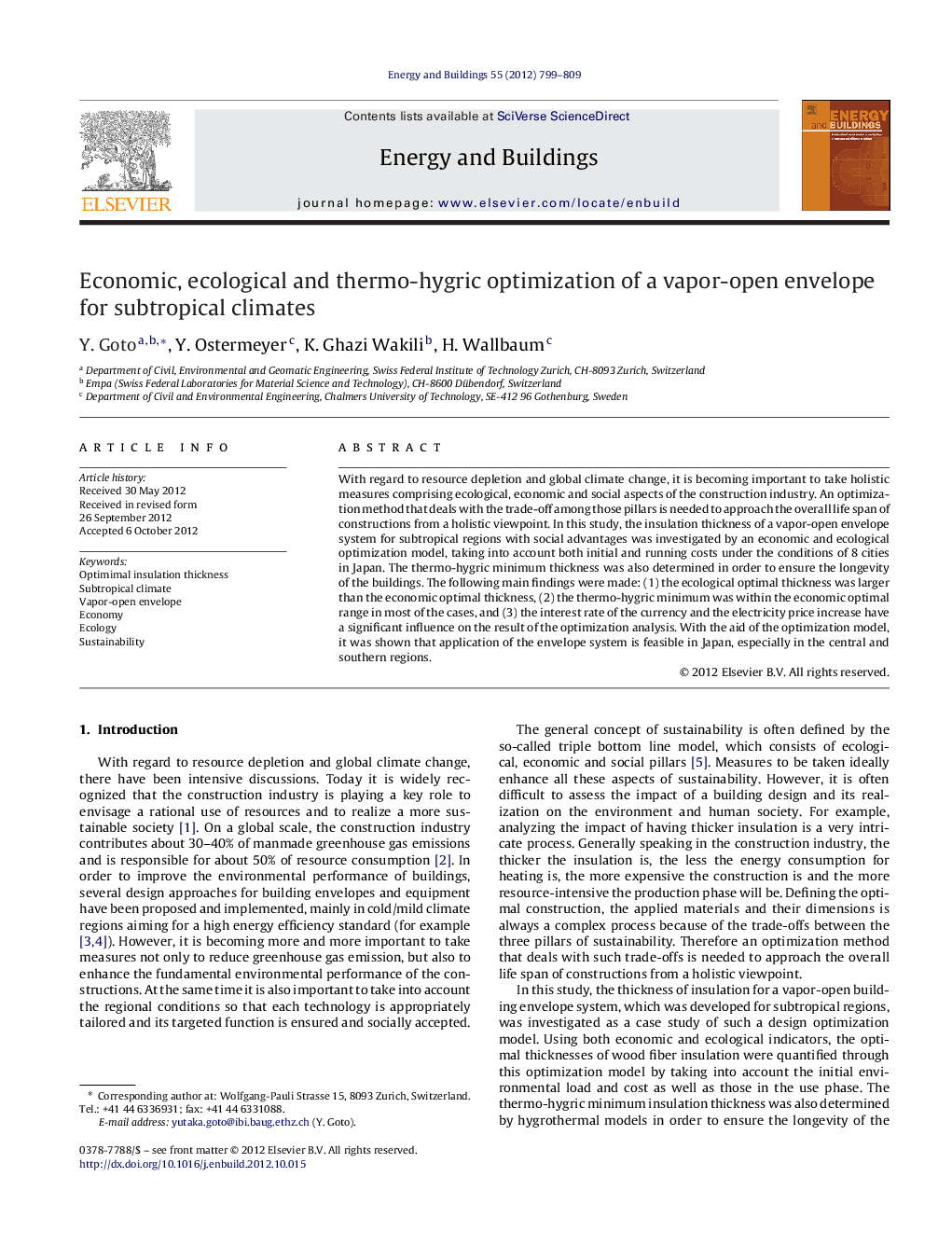| Article ID | Journal | Published Year | Pages | File Type |
|---|---|---|---|---|
| 263890 | Energy and Buildings | 2012 | 11 Pages |
With regard to resource depletion and global climate change, it is becoming important to take holistic measures comprising ecological, economic and social aspects of the construction industry. An optimization method that deals with the trade-off among those pillars is needed to approach the overall life span of constructions from a holistic viewpoint. In this study, the insulation thickness of a vapor-open envelope system for subtropical regions with social advantages was investigated by an economic and ecological optimization model, taking into account both initial and running costs under the conditions of 8 cities in Japan. The thermo-hygric minimum thickness was also determined in order to ensure the longevity of the buildings. The following main findings were made: (1) the ecological optimal thickness was larger than the economic optimal thickness, (2) the thermo-hygric minimum was within the economic optimal range in most of the cases, and (3) the interest rate of the currency and the electricity price increase have a significant influence on the result of the optimization analysis. With the aid of the optimization model, it was shown that application of the envelope system is feasible in Japan, especially in the central and southern regions.
► The optimal insulation of an envelope system for subtropical climates was studied. ► The minimum insulation to ensure the longevity was determined. ► Economic factors have a significant influence on the result of the optimization. ► Implementation of the envelope system is feasible in Japan.
